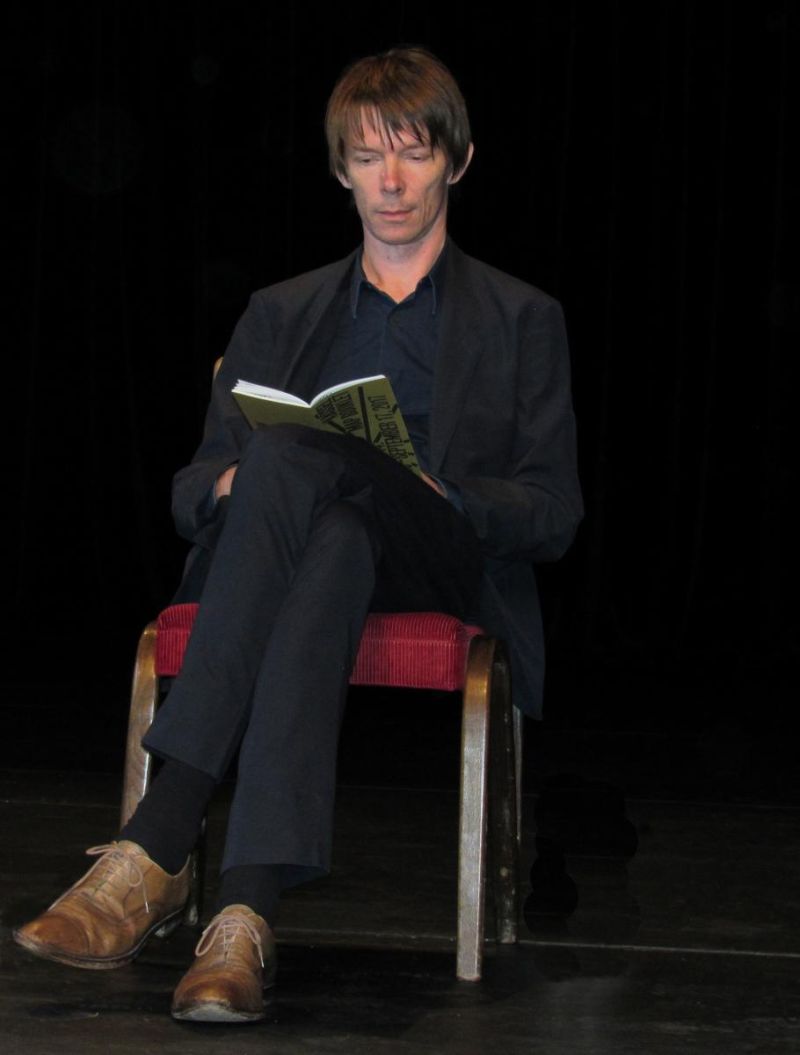Adam Szymczyk and documenta 14
Mediathek Sorted
-
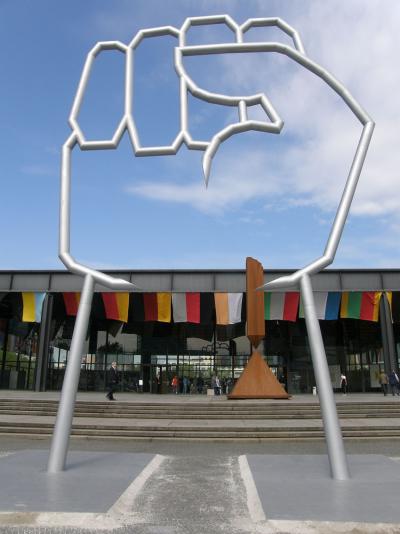
-
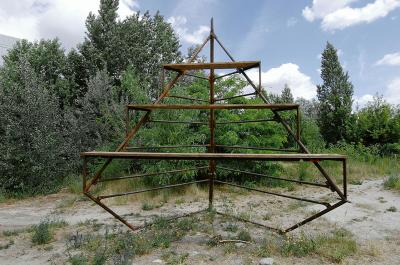
-
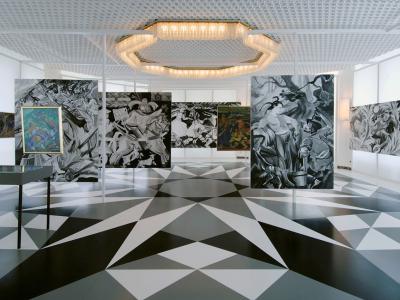
-
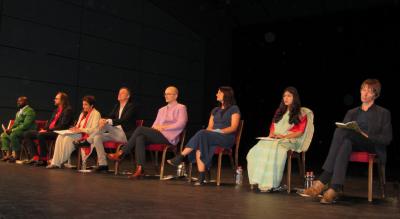
-
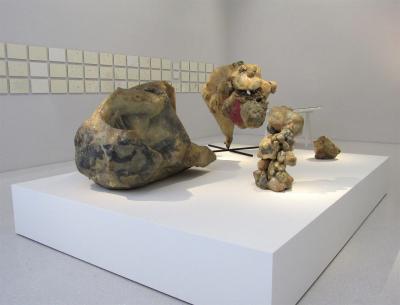
-
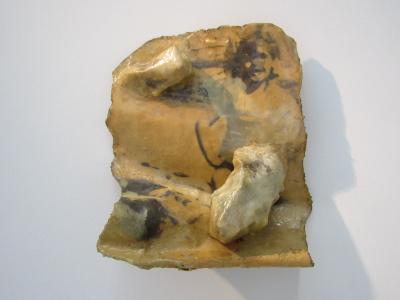
-
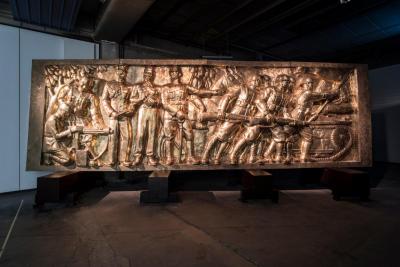
-
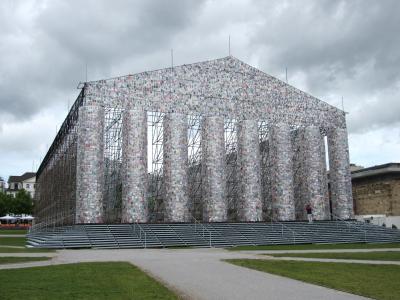
-
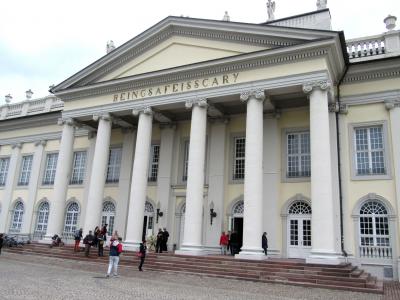
-
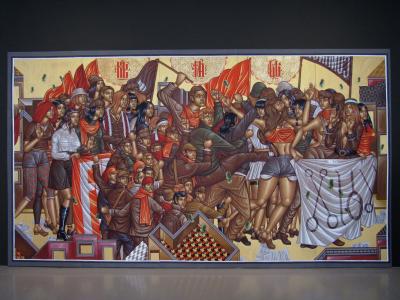
-
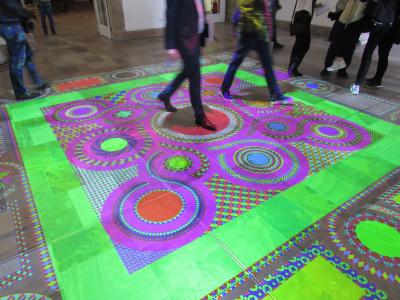
-
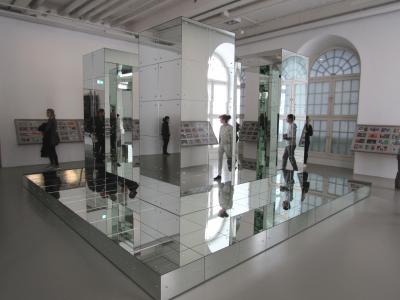
-
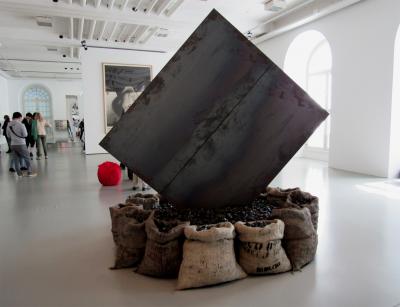
-
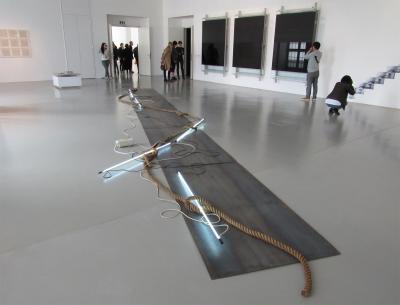
-
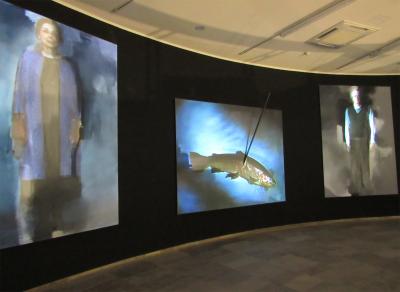
-
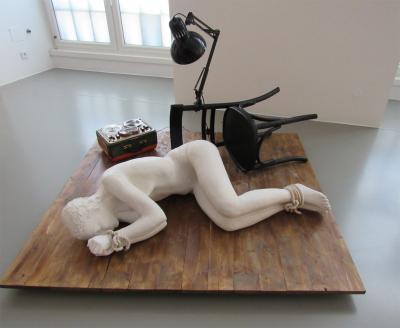
-
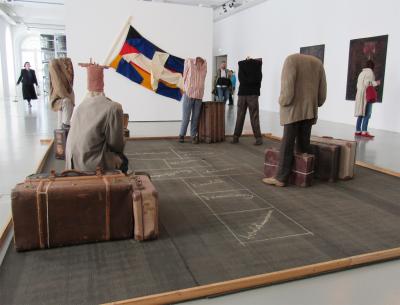
-
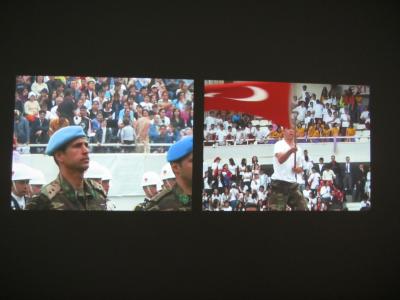
-
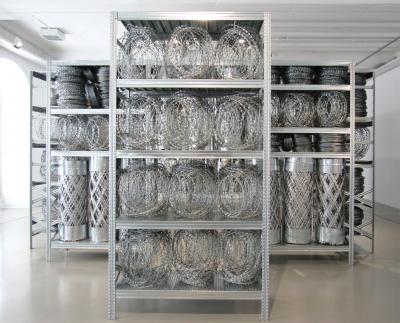
-
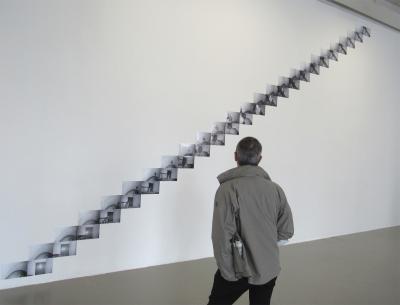
-
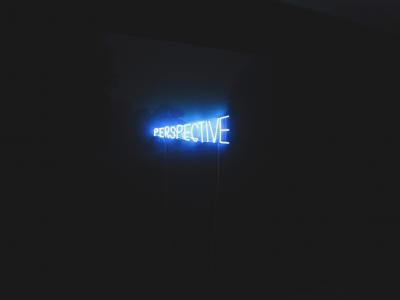
-
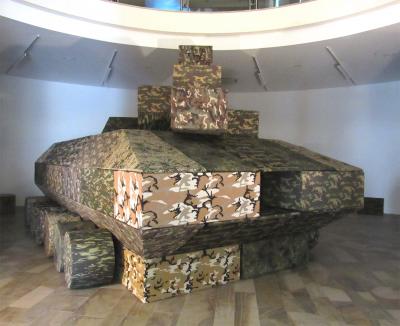
-
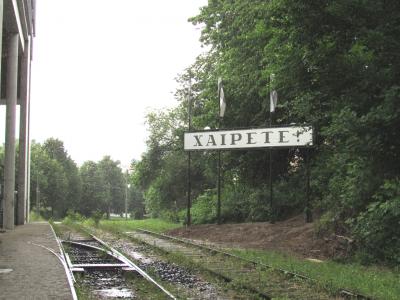
-
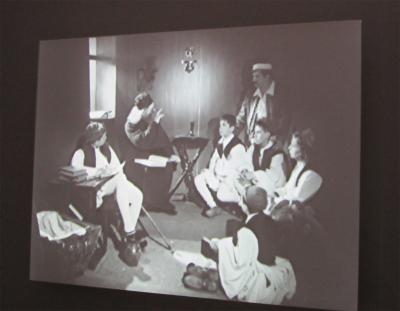
-
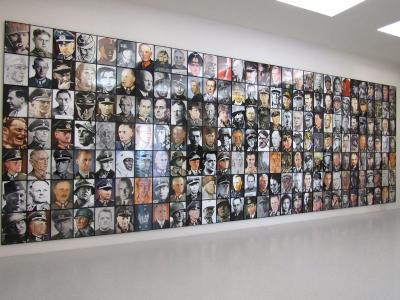
-
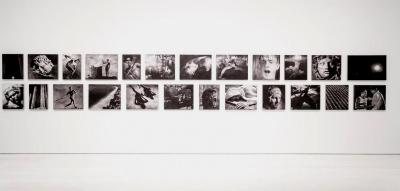
-
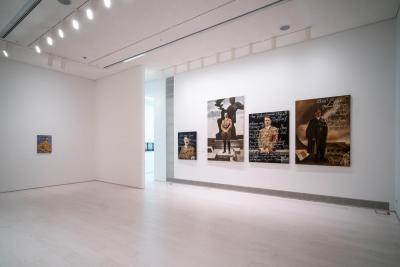
-
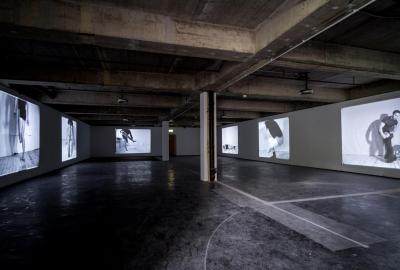
-
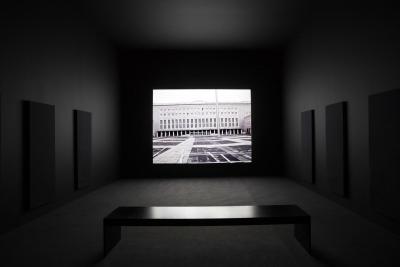
-
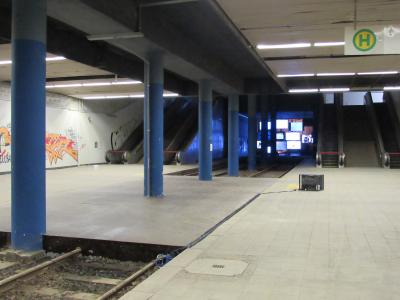
-
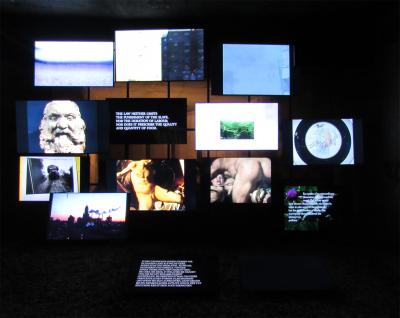
-
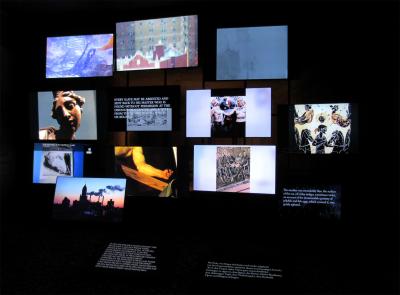
-
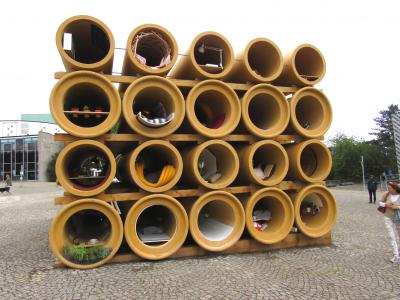
-
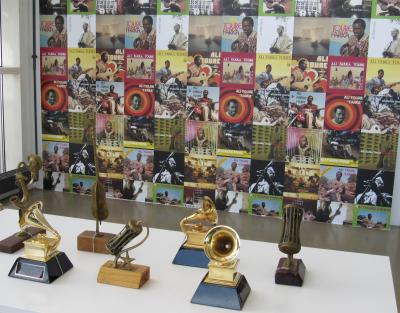
-
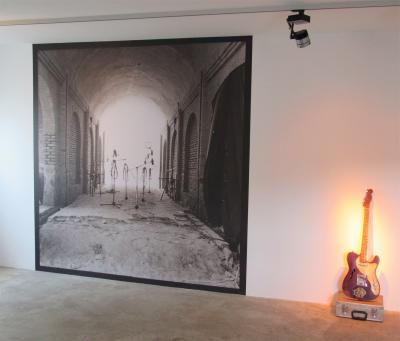
-
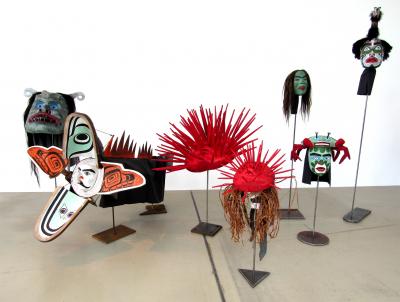
-
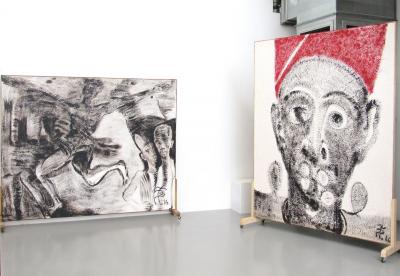
-
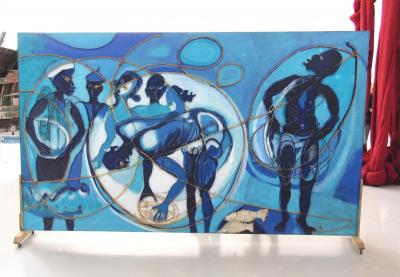
-
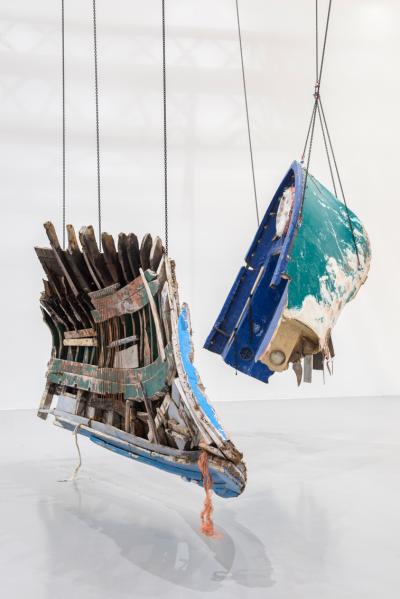
-
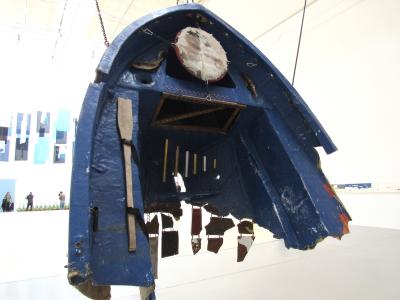
-
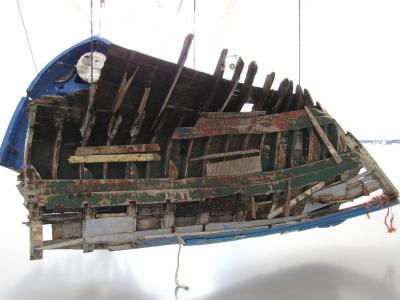
-
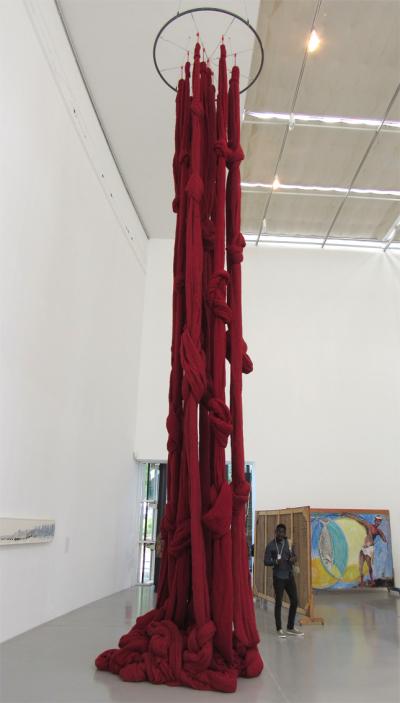
-
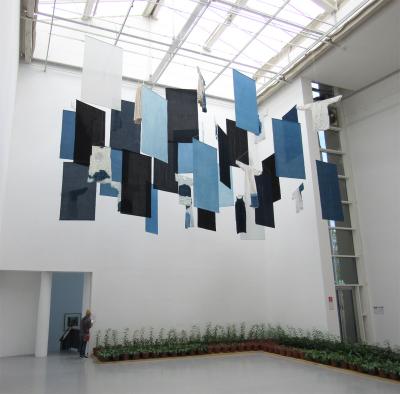
-
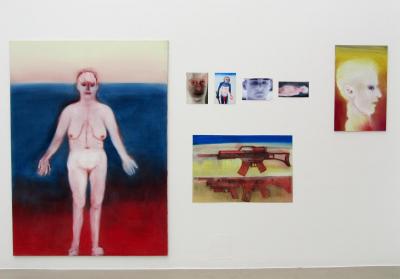
-
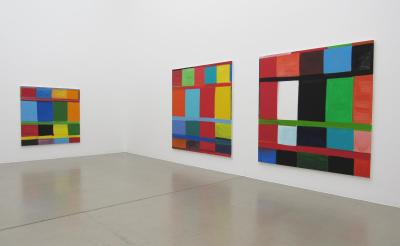
-
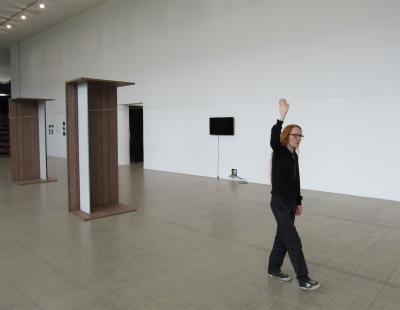
-
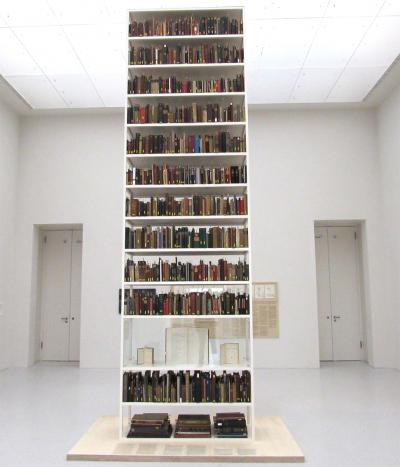
-
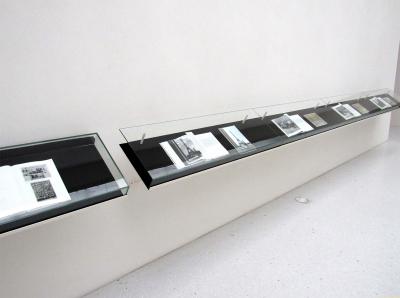
-
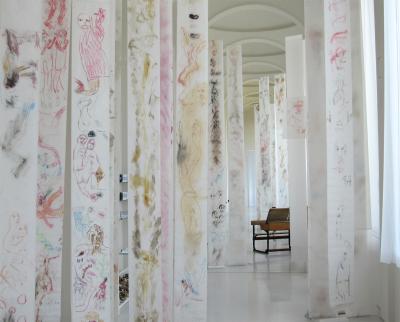
-
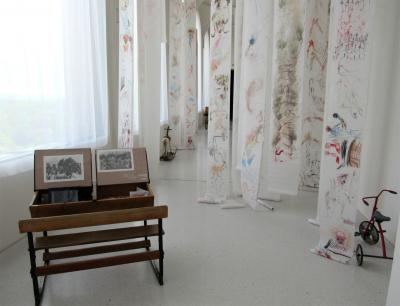
-
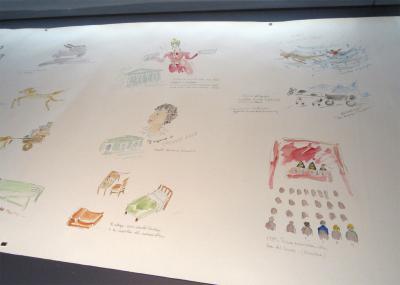
-
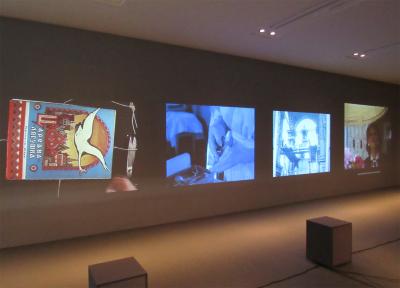
-
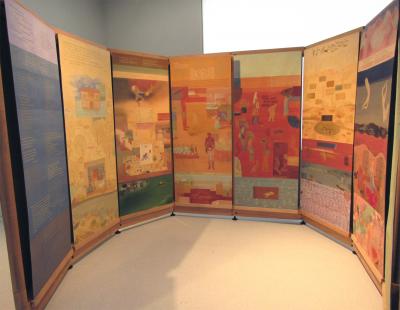
-
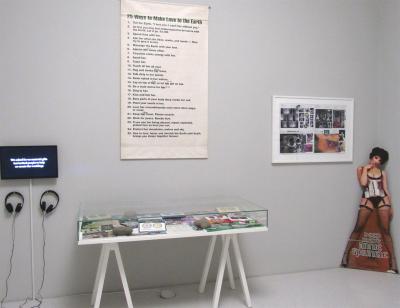
-
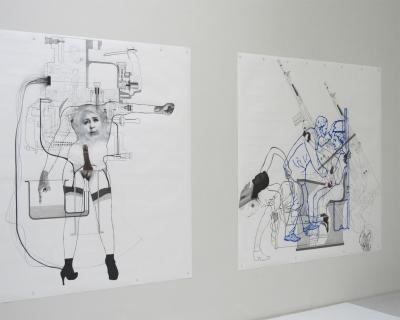
-
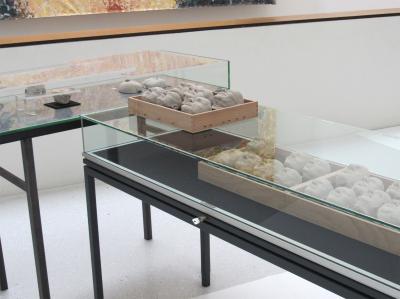
-
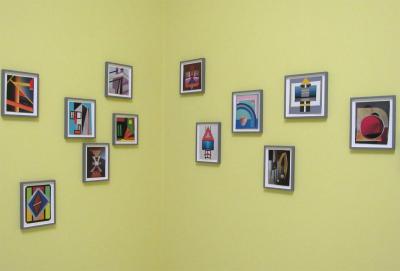
-
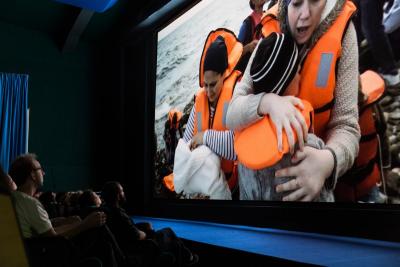
-
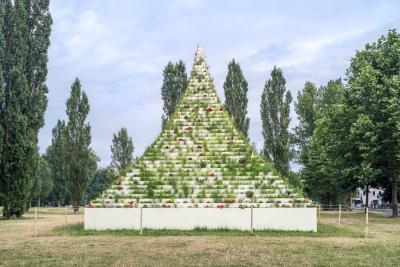
-
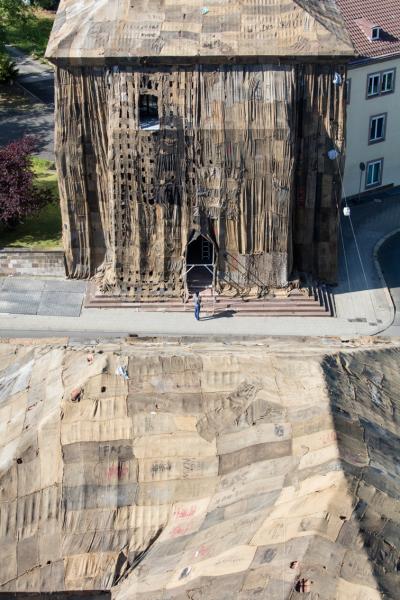
-

Adam Szymczyk - Hörspiel von "COSMO Radio po polsku" auf Deutsch

An “intellectual programme” in Basel
On 31. October 2014, just 11 months after being appointed the future head of the Documenta, Adam Szymczyk took his leave as the director of the Kunsthalle in Basel. According to an article in the local newspaper written to mark the occasion, Szymczyk was a “relatively unknown” person when he took up his post in 2003. During his time at the Basel Kunsthalle he stamped its character with an “intellectual programme […] far removed from the paintings that his predecessor Peter Pakesch so loved: in the direction of emptiness, reduction, installation work and interventions. Few of the international artists whom he presented were previously known at the knee of the Rhine. His exhibitions were always a challenge, even for people who were used to art: but a challenge that was taken up willingly by visitors. He opened up an approach to art, which was up-to-date, often political and socially relevant.” He countered the accusation of not being open to local artists by introducing a new idea, “regional exhibitions”, and including the Hochschule für Gestaltung and Kunst FHNW in the concept. [1]
Szymczyk opened his programme of exhibitions in Basel in 2004 with an exhibition entitled “Earth, Wind and Fire” by the Polish multimedia artist, Piotr Uklański (*1968 Warsaw), with whom he had been working in the Warsaw gallery Foksal since 1999.[2] In 2005 he presented further Eastern European attitudes to art with an exhibition by the Polish sculptor, installation artist, filmmaker and photographer, Artur Żmijewski (*1966 Warsaw); in 2007 he presented the work of the Romanian artist, Dan Perjovschi; and in 2008 he presented an exhibition entitled “only those wild species that appeal to people will survive” by the Slovakian artist, Ján Mančuška. He documented critical artistic attitudes to the marketing of art with solo exhibitions by the Danish artist group, Superflex (2005), Gustav Metzger (2006), Peter Friedl (2008), Goshka Macuga and Danh Vo (both 2009), Matthieu Kleyebe Abonnenc and Adrian Melis (2013) and two group exhibitions, “How to Work” and “How to Work (More for) Less” (both 2011). Szymczyk’s thematic exhibitions dealt with the construction and reconstruction of historic events, episodes and narrations, intended to open up another way of looking at how we write history: “QUAUHNAHUAC. It’s precisely a Utopia” (2006), “Report on Probability” (2009), “Strange Comfort (Afforded by the Profession)” (2010) and “Winter Line” by the Scottish artists, Ross Birrell and David Harding (2014). His retrospectives presented the New York artist, Lee Lozano (1930-1999), the Dutch media artist Bas Jan Ader (1942-1975) and the Indian painter, graphic artist and photographer, Nasreen Mohamedi (1937-1990).[3] In 2011, on the occasion of an exhibition in Vienna by the Romanian-German concept artist, Daniel Knorr , the New York Times published an article about him entitled “Superstar among Curators”, maintaining that he was “something of a curatorial rock star”.[4] When Szymczyk left Basel there were mixed reactions to his challenging programme of exhibitions from artist colleagues and people working in the local cultural scene.[5] According to the TagesWoche, he was 21st in the global list of the 100 leading art curators published in 2014 by the London ArtReview. In November 2016 he had moved up to second place in the list that is compiled anonymously by a group of international experts.[6]
[1] Karen N. Gerig: Bye bye, Adam!, TagesWoche Basel, 31.10.2014, http://www.tageswoche.ch/de/2014_44/kultur/671978/
[2] Following an invitation by the Fundacja Galerii Foksal/Foksal Gallery Foundation in 1999 Piotr Uklański made a mosaic of broken ceramic from the ceramic factories in Ćmielów und Pruszków for the entrance of the department store Smyk in the centre of Warsaw. In 2002, in the Galerie Foksal, he worked this into a large format presentation containing portraits of artists and colleagues in the Foundation, one of whom was Szymczyk (“Foksal Gallery”, 425 x 230 cm). cf. Ewa Gorządek: Piotr Uklański, on: culture.pl (2004), http://culture.pl/en/artist/piotr-uklanski
[3] For comprehensive information on all exhibitions in the archive of the Kunsthalle Basel, see: http://www.kunsthallebasel.ch/exhibitions/past/
[4] Ginanne Brownell: Superstar Among Curators, The New York Times, 13.6.2011, http://www.nytimes.com/2011/06/14/arts/14iht-rartadam14.html
[5] Karen N. Gerig: Stimmen zu Adam Szymczyks Abschied, TagesWoche Basel, 31.10.2014, http://www.tageswoche.ch/de/2014_44/kultur/671964/
“Guerilla tactics” in Berlin
Szymczyk made a name for himself in Germany in 2008 as the curator of the 5. Berlin Biennale für zeitgenössische Kunst, when the critics hailed him as the “shooting star of the scene”.[7] The Berlin Biennale was set up as a forum for contemporary art in 1996 [8]on the initiative of Klaus Biesenbach (now the director of the New York exhibition house, MoMa PS1), for which he curated the first exhibition in 1998. In 2008 it received a grant of €2,500,000 from the Kulturstiftung des Bundes. The Kulturstiftung still regards its range of exhibitions as the “most important shop window for contemporary art” in Germany to offer “a podium to less established positions in more recent art”. Here the German capital was regarded “as an ideal stage to enable artistic exchanges between East and West.”[9] In 2008, on the tenth anniversary of the series, Szymczyk invited the Los Angeles art historian, Elena Filipovic, to be his co-curator and presented the fifth show under the heading “When Things Cast no Shadow”. In 2014 Filipovic was appointed to succeed Szymczyk as the director of the Kunsthalle Basel.
Szymczyk and Filipovic divided the Berlin Biennale into a day and night area. The day area comprised exhibitions by 50 artists from four generations, presented in four Berlin venues: the KW Institute for Contemporary Art, the Neue Nationalgalerie, the Skulpturenpark Berlin_Zentrum and the Schinkel-Pavillon. According to Szymczyk and Filipovic in the exhibition catalogue, the venues, on both sides of the separating line between the East and West, were intended to represent “typical contrary conditions for the presentation of art”. The history of the corresponding buildings and sites should reveal “a multifarious ideological context for understanding the individual parts of the exhibition and the works shown therein, most of which were made especially for the Biennale”. The night area was a programme of 63 events featuring over 100 other artists, and including talks, discussions, performances, concerts, workshops, film and video screenings. Under the title, “Mes nuits sont plus belles que vos jours“ (English: My Nights Are More Beautiful Than Your Days) – it was taken from the eponymous erotic film made in 1989 by the Polish director, Andrzej Żuławski (1940-2016) – the night programme was “convinced that it is possible to produce knowledge of methods, other than by means of a conventional series of talks and exhibition formats. This series is intended to give artists and thinkers from various areas the chance to experiment and present their ideas. Hence we have asked them to produce new works, revise old ones, and talk about them or interpret them before an audience.”[10]
[7] Susanne Boecker: When Things Cast no Shadow, Kunstforum international, vol. 191, May-July 2008, p. 178
[8] The history and exhibition overview of the Berlin Biennale can be found at http://blog.berlinbiennale.de/
[9] http://www.kulturstiftung-des-bundes.de/cms/de/projekte/bild_und_raum/archiv/8_berlin_biennale.html
[10] When things cast no shadow. 5. Berlin Biennale für Zeitgenössische Kunst/5th Berlin Biennial for Contemporary Art, edited by Adam Szymczyk and Elena Filipovic, Zürich 2008; for the online statement of the curators: http://blog.berlinbiennale.de/allgemein/adam-szymczyk-und-elena-filipovic-im-katalog-zur-5-berlin-biennale-5483
Critics regarded the strategies of the two curators to divide the exhibition chronologically – into a static and a performative side based on the time of day – as a rejection of a curatorial composition of existing objects and a choice of unequal contradictory exhibition venues, as a “subversive” break with and muddying of traditional chronological and spatial ways of presenting art. This was a sort of “guerrilla tactic” that demanded a high level of mobility and flexibility from both artists and visitors alike. At the same time they complained that most of the artworks produced for the Biennale followed similar strategies (“thwarting expectations, questioning rigid ideas, and undermining traditional categorisations”), and had scarcely any relationship to the venues in which they were shown. [11]
Piotr Uklański was once more present from Poland: in front of the main entrance to the New National Gallery he presented a 10 metre high “Faust” made of light grey painted steel piping and put together solely in terms of its contours (Ill. 1). Cezary Bodzianowski (*1968 Łódź), a creator of absurd solo performances, presented videos and current actions in the KW Institute for Contemporary Art: the screens were mounted on a carpet featuring a map of Berlin and covering the whole wall. Ania Molska (*1983 Prudnik), showed videos of the construction of her geometric metal structures, in which farm workers formed a living sculpture at the end of the day’s work. Her metal objects, whose geometrical principles referred back to the Russian avant-garde, were presented in life-size video formats in the Skulpturenpark Berlin_Zentrum, which resembled an abandoned urban space (Ill. 2). In her contribution in the New National Gallery Paulina Olowska (*1976 Danzig) grappled with the work of the Polish painter, Zofia Stryjeńska (1891-1976): she took five of her paintings featuring themes from Slavic myths and Polish folklore and transformed them into monumental, grisaille paintings, thereby emphasising the living contrast to the original compositions. At the same time in the Schinkel Pavilion, she curated an exhibition in which she presented documents and paintings by Stryjeńska alongside her own works. Paulina Olowska also designed the flooring, a repetition of the design in the Polish Pavilion at the 1925 Exposition Internationale des Arts Decoratifs et Industriels Modernes in Paris, where Stryjeńska had presented her works. (Ill. 3)
[11] Susanne Boecker: When Things Cast no Shadow, Kunstforum international, vol. 191, May-July 2008, description and criticism of the exhibition pp. 178-181, picture documentation pp. 182-229. cf. also Christina Tilmann: Langer Schatten. Die Neue Nationalgalerie, Berlins prominentestes Museum, schüchtert die Künstler ein. Die Biennale-Kunst gibt sich sensibel, scheu und verhalten, Der Tagesspiegel, Berlin 4.4.2008, http://www.tagesspiegel.de/kultur/berlin-langer-schatten/1203030.html
For the first time two venues at the Documenta
From the time he left Basel Szymczyk officially had two and a half years to prepare documenta 14 for its opening in June 2017. As early as the start of October 2014 it was already clear that he would also break with traditional forms of presentation. The organisation responsible for the exhibition (the documenta and Museum Fridericianum gGmbH) issued a press release and, in a lecture to students and teachers at the Kunsthochschule Kassel, Szymczyk made a surprising announcement that for the first time in its history since 1955 the exhibition would be presented in two places, Athens and Kassel. The press release announced that: “Instead of a single spectacle in a fixed place and a clear chronological structure, as is characteristic for major international exhibitions, documenta 14 will have two runs with a dynamic balance both chronologically and spatially”. Similar to Kassel in 1955, which was still trying to come to terms with the trauma of the destruction of National Socialism and the war, Athens is now the showplace for Europe’s economic crisis and a metaphor for the swiftly changing global situation. The Greek capital embodies the economic, political, social and cultural dilemmas which confront Europe today.
The working title for documenta 14 was “Learning from Athens”. According to the local press in Kassel it would be about the forms of solidarity and survival mechanisms that would help during the crisis. Szymczyk “is interested in all the efforts to overcome the crisis, i.e. in the grassroots movements and communities that reject, say, the rampant corruption and are trying to build something new.” He has made it clear “that his documenta should not drop into the Greek capital like a UFO… only to disappear once more.” He preferred rather to concentrate on cooperating with existing cultural initiatives and projects, “which are fighting to survive in difficult times”. He wanted to support these institutions and demonstrate his trust through collaboration. [12]
The division of the exhibition into two locations came as a surprise to the public at large. As Szymczyk wrote in a 700 page “Reader” for documenta 14, this concept had already been part of the project proposal which led to his appointment as artistic head. He had already made his first contacts with Athens in December 2013 and March 2014, where working groups were set up. After his plans were made known there were conflicting reactions both in Kassel and in Athens. In Greece it was feared that this would be “another major event without any sustainable effect” just like the Olympic Games in 2004.[13] The local Kassel population, conservatives and city business people predicted that the documenta would lose its cultural heritage to Athens.[14] But neither the Lord Mayor of Kassel nor the sponsors were willing to follow this argument. In the final analysis Athens was not only a flashpoint for “current, global challenges”, but also a “point of culmination for thousands of years of European culture”.[15] In addition, in 2002, documenta 11 had had platforms in Vienna, New Delhi, Berlin, St Lucia and Lagos; and documenta 13 in 2012 has had access to stations in Kabul, Cairo and Banff.
[12] Mark-Christian von Busse: Leiter Szymczyk: documenta 14 findet auch in Athen statt, Hessische/Niedersächsische Allgemeine, 7.10.1914, https://www.hna.de/kultur/documenta/kasseler-documenta-auch-athen-4056253.html . cf. also: Julia Voss: Exportweltmeister Deutschland geht nach Athen, Frankfurter Allgemeine, 8.10.2014, http://www.faz.net/aktuell/feuilleton/kunst/documenta-mit-zweitem-standbein-exportweltmeister-deutschland-geht-nach-athen-13196996.html
[13] Adam Szymczyk: 14: Iterabilität und Andersheit: Von Athen aus Lernen und agieren, in: Der documenta 14 Reader, Munich 2008, pages 19-21
[14] Niklas Maak: Streit um die Documenta 14. In Athen den Süden suchen, Frankfurter Allgemeine, 9.10.2014, http://www.faz.net/aktuell/feuilleton/streit-in-kassel-die-documenta-soll-nun-auch-nach-athen-13199214.html
[15] Ibid
The slogan, “Von Athens lernen/Learning from Athens”, remained valid to the end. The signet of the exhibition was the proverbial owl of Athens.[16] What we can learn from Athens was made more concrete by Szymczyk in the foreword to the Documenta reader. By being active in Athens we could learn “iterability and otherness“, which might be translated here as reproducibility, differentiation and the diversity of cultural structures and experiences. “The decision to conceive documenta 14 as a ‘Theater and its Double’ (Antonin Artaud) in Athens and Kassel – and with it to shift its geographical and ideological centre from its home in Germany – came from a feeling that it was necessary to act in real time and in the real world. The world cannot be exclusively explained and interpreted from Kassel – from a perspective that is solely situated in Northern and Western Europe […] By moving the documenta to Athens, from which we wish to unlearn what we already know instead of teaching lessons to the inhabitants, we intend to open up space for new potentials. The old world is based on concepts of belonging, identity and roots. Our ever-changing new world will be a world of radical subjectivity. […] That said, artists can show us a way to teach us what it means to learn, to ‘learn from below’, as described by Gayatri Chakravorty Spivak; or in the formulation by Souleymane Bachir Diagnes, to learn from others in order to live together. Learning from them will enable us to conceive of a symmetrical situation, a meeting between equals, instead of having an asymmetrical power relationship between a sovereign and his subalterns. Artists – and that means authors, filmmakers, sculptors, painters, actors and all those who were once refused entry to the Republic – can teach us that we must first learn to be alien to ourselves and thus experience a de-creation (as posited by Simone Weil), instead of continuing with overproduction. They can show us how the foundations underlying our positive and passive understanding of the world can be shattered. They can teach us how to abandon the cities and then re-inhabit them (here Kassel and Athens are pertinent examples), and how we should value the way in which we work and what we make from the fruits of our work.”[17]
[16] The three language webiste of the exhibition: http://www.documenta14.de
[17] Adam Szymczyk: 14: Iterabilität und Andersheit: Von Athen aus Lernen und agieren, in: Der documenta 14 Reader, Munich 2008, pages 27, 33-34
Political themes as a selection criterion for art
Since the exhibition in Athens and Kassel would be on equal terms, it was necessary to divide the budget originally planned for Kassel. In order to prepare the show, Szymczyk appointed a team of international curators comprising Pierre Bal-Blanc, Hendrik Folkerts, Hila Peleg, Dieter Roelstraete and Monika Szewczyk. In 2016 the team was extended by Paul B. Preciado, Candice Hopkins and Bonaventure Soh Bejeng Ndikung as Curator at Large. (Ill. 4) Marina Fokidis, a curator and author who lived in Athens, was appointed as the head of the artistic office there. Fokidis curated the Greek pavilion at the Venice Biennale in 2003; and in 2011 she curated the 3. Thessaloniki Biennale of Contemporary Art. She is also the founder and artistic head of the Kunsthalle Athena, and editor of the English language periodical for art and culture, South as a State of Mind, which is published twice a year in Greece. Four editions of the periodical, each with more than 200 pages and exclusively devoted to articles on documenta 14, were published between Autumn/Winter 2015 and Summer 2017. They also make up the publicity basis of the exhibition alongside the “documenta 14 Reader” and a ca. 300 page “documenta 14 Daybook” containing monographs on all the artists.
Szymczyk wrote that South as a State of Mind, “comprises literary genres, archive documents, commissioned essays and special articles on artists, poets, composers and others; it is part of [18]the development process of documenta 14, instead of simply following it”. The articles it publishes should deal with associative twin concepts like banishment and expropriation, silence and masks, language and hunger, violence and victims, as well as analysing social and political areas like colonialism, indigenous knowledge, feminism, post-queer politics and so on;[19] areas into which artists in the exhibition can be placed. In order to be able to fully comprehend all the social and political areas in the exhibition, like flight and banishment, or stolen art and restitution, visitors and critics at the exhibitions in Athens and Kassel cannot avoid studying all the published material or analysing the themes themselves from the artworks and actions shown there.
Other themes like the opposites of poverty and generosity are shown in the exhibition by older works of art, in this case by a work by Gustave Courbet (1819-1877) from the time of French realism. This is covered by an essay written by the American art historian, Linda Nochlin, in the first edition of South as a State of Mind.[20] But anyone who expects a representative Courbet picture in the exhibition will be disappointed and will have to be satisfied with a visit to the Kassel Neue Galerie where they can find a small pencil sketch by the painter entitled “L’Aumône d’un mendiant à Ornans“ (English: Alms for a Beggar in Ornans, 1868), taken from a far-off American collection. All in all it is clear that it is the intellectual concept of the artistic head and the team of curators, rather than the art, that is in the foreground of the current documenta. Proof of this concept is provided by the fact that, alongside around 150 contemporary artists, works by 105 classical artists or artists who died in the 20th century or in recent years, are represented in the exhibition.[21] Documenta 14 is thus primarily an intellectual construct rather than an exhibition of current contemporary art.
[18] Ibid., p. 37
[19] Linda Nochlin: Representing Misery: Courbet’s Beggar Woman, South as a State of Mind, #6 (= Documenta 14, #1), Autumn/Winter 2015, pages 197-206
[20] Lists of artists, clearly divided into living and old/dead can be found on the website of documenta 14, http://www.documenta14.de/en/public-exhibition/ . All the artists’ names are linked to their works in Athens and Kassel with short essays on them and their work. Only living artists can be found in the “documenta 14 Daybook”.
[21] The Fridericianum in Kassel was built in 1779 to house the art collection and library of the Landgraf Friedrich II von Hessen-Kassel. It was one of the first museums in Europe to be open to the general public. Between 1810 and 1813 it was the palace of the Kingdom of Westphalia and the first German parliamentary palace. After it was damaged in the Second World War, in 1955 it housed the first Documenta. Since then it has been continuously used for temporary documenta exhibitions.
Artists from Poland are represented in the area of past art (only in Athens): photographic and written documents by the writer, painter and situation artist Krzysztof Niemczyk (*1938 Warsaw - 1994), can be seen: in the 1960s he made a name for himself with actions against the Communist police state. Władysław Strzemiński (1893-1952), one of the key figures of the Polish avant-garde is represented (only in Kassel) with six drawings from a larger series made in 1940 in which he witnessed the deportation of Jews by the Nazis. In both locations visitors can view a number of his abstract visionary studies, in which, after the Second World War, he describes the influence of sunlight on the human eye. Alina Szapocznikow (1926-1973, Ill. 5a, b), who was interned by the Nazis in a number of different concentration camps, is exhibiting works both in Athens and Kassel: these are extensive sets of sculptures made of polyester resin showing her preoccupation with her own body after she was diagnosed with cancer at the end of the 1960s in Paris. Andrzej Wróblewski (1927-1957) is showing works in both places: images made in 1953 during an early form of Polish socialist realism, which refer to current events in the Netherlands and Poland.
As in the 5. Berlin Biennale, living artists were mostly left free to decide which works they wanted to show or wished to create specially for the exhibition. Some of them regarded it as a problem to choose and/or produce works of equal value with powerful statements for the two parallel exhibitions in Athens and Kassel. Thailand, for example is represented by the multimedia artist, Arin Rungjang (*1975 Bangkok, Ill. 6), who deals with the discrepancies between democracy and military dictatorship in his country. His video installations, drawings and sculptural work deal with the history of the Democracy Monument which came into being in 1932 after the dissolution of the absolute monarchy in 1932 in Bangkok. He uses eyewitness accounts and written documents dealing with the popular uprising against the military dictatorship in October 1973 which culminated in a march from the Thammasat University to the monument. Radio broadcasts and the uprising of the Bangkok students inflamed the student uprising at the Polytechnic in Athens in November, whose aim was to end the military dictatorship. Rungjang’s video installation in the Benaki Museum in Athens brings the events of 1973 in Bangkok and Athens together (“And then there were none [Tomorrow we will become Thailand]”, 2016). The brass and wood replica of a relief of the Democracy Monument in Bangkok can be seen in the Neue Neue Galerie (Neuen Hauptpost) in Kassel, along with drawings and paintings and a video.
Anyone expecting the latest works and concepts from living artists will have to think again from time to time. Without a doubt the most impressive and effective work in Kassel stands in front of the Fridericianum : a somewhat smaller form of the “Parthenon of Books” by the Argentinean concept and performance artist, Marta Minujín (*1941 Buenos Aires, Ill. 7), which could be seen after the collapse of the military junta in 1983 in Buenos Aires, where the artist had filled the steel construction with 25,000 books that had been banned and confiscated by the junta. The new version was commissioned from the artist by documenta 14. Even in Kassel the power of her work as a metaphor for democracy, which was discovered in Athens, and a symbol of education, remains unbroken: especially when placed before the classical antique architecture of the Fridericianum in a land like Germany, and, of course with reference to Athens as one of the sites of documenta 14. The new construction was to have been filled with 100,000 “banned books” from all ages and peoples, donated by the general public. However it was not completed.
Documenta as a guest in Athens
Documenta 14 was not only aimed at an audience interested in art, but above all at intellectuals who were prepared to accept written material which often only stands on the periphery of the pictorial arts. Clearly not much remains from the original plans to create a close contact with the grassroots movements and artistic networks in Athens, from which Szymczyk and his team wanted to learn. In an interview with the arte tv magazine metropolis, Iliana Fokianaki, the founder of the Athens state of concept (a non-profit project), said that: “There was no real dialogue with the local scene although we were all very excited about it. I think that this has been one of the main problems to date, that there has been no real dialogue between documenta and the local artists”. Indeed, the painter and installation artist, Alexandros Tzannis, whose works are currently being presented there, and have also been presented in venues like the Benaki Museum in Athens and the Berlin Künstlerhaus Bethanien, complained that the makers of Documenta had not even seen his exhibition. The curator of documenta 14, Pierre Bal-Blanc, who moved to Athens three years before the opening and accompanied the construction of the exhibition in the EMST, the National Museum of Contemporary Art, said that the general public had been scarcely aware of the preparations for the exhibition. The Athens arts reporter, Selana Vronti, added: “Many people here know nothing about the documenta and what is happening here, but the closer the opening comes the more they will learn about it. At the moment they regard the documenta as an alien body in the city. Other people regard it as colonialist and imperialist.”[22]
In an interview with Deutschlandfunk Kultur Szymczyk explained that the working title “Learning from Athens”, did not refer to the art scene there but more to the situation of the common folk. “Of course we can be accused of doing too little to include the local art scene. But we were not so much interested in the arts scene in Athens as the city as a living organism. And that transcends contemporary art. Athens does not stand for itself alone, but stands for other places in the world like Lagos and Guatemala City. They are just as much here in our heads. The challenge of linking ourselves to the art scene and Athens would have been too small for this documenta. And if anyone feels let down they should know that our exhibition never wanted to represent the art scene in Athens. Other people should do that. If people here do not feel represented enough then they should think about how to get their voices heard more audibly.” [23]
However, there is no doubt that documenta 14 has enriched the cultural scene in Athens. It does not take place in a central location but in venues like the Greek Film Archive, in theatres, concert halls, parks and historic places like the Temple of the Olympian Zeus. Countless public programmes under the title “The Parliament of Bodies” are included in the exhibition. Their performative structure comprises performances, theatre, music, ballet, sound art, readings, as well as solo actions, group and participative actions: they not only question the traditional division between exhibitions and their accompanying programmes, but also undermine the division between theories of cognition between the North and South, between normative thinking and subjugated forms of knowledge like hierarchisation by gender, sex, origin, obstructions and their removal, as well as by social class. As the exhibition flyer puts it: “How do we create a critical agency during a major exhibition within a neo-liberal economy? Can a museum resist its own colonial and patriarchal regimes? Can the area of tension between Athens and Kassel be used as a critical space to sketch out a cooperative artistic and activist projects beyond the framework of nation states and businesses? We shall fail. But not for lack of trying”
[22] Metropolenreport Athen und die documenta 14, arte tv, a report by Frauke Schlieckau, 30. March 2017, online until 1.10.2020, http://www.arte.tv/de/videos/075016-000-A/metropolenreport-athen-und-die-documenta-14
[23] Reaction to the criticism by the Athens arts scene. Adam Szymczyk in conversation with Vladimir Balzer, Deutschlandfunk Kultur, radio programme broadcast on 7.4.2017. A written summary can be found online at: http://www.deutschlandfunkkultur.de/documenta-chef-adam-szymczyk-reaktion-auf-kritik-aus.1895.de.html?dram%3Aarticle_id=383349
Several events in Athens are related to the venues in which they take place. One of them is a dance performance in the Piräus Archaeological Museum, where 15 artists presented a sequence of movements to the Athens choreographer, Kostas Tsioukas. The resulting choreography is intended to mediate a new view of the ancient art in the museum: According to Pierre Bal-Blanc “The aim is to bring movement into the Archaeological Museum. It’s all about offering new perspectives without putting on a spectacle.”[24] A weekly film programme entitled “Keimena” will be broadcast in cooperation with the Greek television station ERT. Every Monday around midnight until the middle of September 2017 it will show experimental documentary and feature films.[25]
Documenta 14 has been accused of many things: in Athens, of being a poor and unprofessional presentation of objects and installations, of missing captions and an unsatisfactory communication of the events[26]; in Kassel, of being a “careless presentation“ reflecting the boredom “felt by Szymczyk from the very start for the birthplace of Documenta”.[27] After the opening in Athens critics wrote that the “pressure towards technological features” had never been so powerful, “and the old question of whether there is a difference between art and ritual no longer appears to interest anyone”.[28] The press reacted to the opening in Kassel as follows: “It is difficult to resist the impression that an overstaffed team of curators has used second-class works from as far away as possible to demonstrate their lack of interest in the status quo of art.”[29] This is clearly the result of a theoretical superstructure about whose effects Szymczyk himself says, that it is “almost impossible” to realise a project that aims to make a political statement from within the organisational structure and restricted position of a state-sponsored cultural institution. [30]
Nonetheless, as Szymczyk stated in an interview with the documentary filmmaker, Natascha Pflaumbaum, documenta 14 was looking for art which changes the world and especially art outside the establishment. “I should like this exhibition to change the system in which contemporary art takes place today, an ossified system of institutions containing a sort of food chain in which museums, exhibitions, art fairs, artists, gallery owners, collectors and state institutions that dish out a little money for contemporary art are dependent upon one another. This system does not seem enough to return to art the powers with which it can change society.”[31] For Pflaumbaum, Athens has managed to turn a part of this change into reality: “When documenta 14 opened in Athens in April it aroused an overwhelming amount of attention. Athens is on a high, an art high. The world is looking towards Athens in a way in which the head of documenta 14, Adam Szymczyk, would never have dreamt of. His idea for Athens has taken off. The Megaron concert hall is full of journalists and art experts. And on the stage: all the artists at documenta 14. What a statement!”[32]
[24] Metropolenreport Athen und die documenta 14 (see note 22), 10’40-12’10 minutes.
[25] The programme of the films shown to date, along with short video excerpts and a trailer can be seen on the website of documenta 14: http://www.documenta14.de/de/public-tv/
[26] Hili Perlson: At documenta 14, Everything’s a Strategy – Even bad Hanging, in the internet on artnet news, https://news.artnet.com/exhibitions/documenta-14-review-bad-hanging-strategy-919811
[27] Hanno Rauterberg: Im Tempel der Selbstgerechtigkeit. Warum die Documenta in Kassel krachend scheitert. Und Münster die bessere Kunst zeigt, Die Zeit, Nr. 25, 13.6.2017, online: http://www.zeit.de/2017/25/documenta-kassel-kunst-kapitalismuskritik
[28] Hanno Rauterberg: Alles so schön zwittrig hier, Die Zeit, Nr. 15, 5.4.2017, online: http://www.zeit.de/2017/15/documenta-athen-kassel-eu-politik/komplettansicht
[29] Kolja Reichert: Documenta in Kassel. Ein tiefsitzendes Unbehagen an der Kunst, Frankfurter Allgemeine, 9.6.2017, online: http://www.faz.net/aktuell/feuilleton/kunst/superkunstjahr-2017/unbehagen-an-der-kunst-documenta-in-kassel-15052732-p2.html
[30]Adam Szymczyk: 14: Iterabilität und Andersheit: Von Athen aus Lernen und agieren, in the documenta 14 Reader, Munich 2008, page 21 f.
[31] Documenta 14: Weltkunst – Eine Reise, arte tv, a documentary film by Natascha Pflaumbaum, broadcast on 14.6.2017, 21’56 minutes, online until 12. September 2017: http://www.arte.tv/de/videos/064491-000-A/documenta-14-weltkunst-eine-reise
[32] Ibid. 47’30 minutes.
Athens as a guest in Kassel
But Athens has also come to Kassel as a guest. Szymczyk has turned over the Fridericianum to the director of EMST, Aikaterini Koskina, and her curators to present a selection of contemporary art from National Museum in Athens – presumably because the Museum in Athens had to be emptied for documenta 14 and the budget for Kassel would not have been sufficient to fill the huge space in the Fridericianum with freshly curated art. According to the “documenta 14: Kassel Map Booklet“, the atlas of all the exhibition venues in Kassel, the exhibitors have made a virtue out of what seems to be a necessity: “The works that have been brought to Kassel are a commentary on the complex reality of Greece today, and simultaneously point to the parallel international journeys of pioneering Greek artists”. Once again visitors to documenta 14 will have to think again and do something that they really do not want – visit a museum of contemporary art. At the same time, behind the portico of the Museum Fridericianum, whose sign has been deformed by the Istanbul artist Banu Cennetoğlu (*1970 Ankara) into the slogan „BEINGSAFEISSCARY“ (2017. Ill. 8), they will be able to view works by over 80 Greek and a number of international artists from the 1960s until the present day, which would otherwise not have possible.[33]
One of the new works in the EMST collection is an acrylic image in the style of a mural, “Fortunately absurdity is lost (but they have hoped for much more)” (2014) by the Athens painter, Stelios Faitakis (*1976 Athens, Ill. 9). It unites elements of revolutionary workers’ art, symbols of Byzantine Christian painting and figures from today’s youth culture to make up an allegory of Greek society. In his video “The End” (Ill. 10) that was shown in 2007 in the Greek pavilion at the Venice Biennale, Nikos Alexiou (1960-2011) also transfers the mosaic on the floor of the monastery at the Mount of Athos into a digitally created ornament featuring different epochs and influences from Greek culture. By contrast the huge object “Hebraic Embrace” (1991-2005) by Lucas Samaras (*1936 Kastoria, Ill. 11) seems like an echo of international Minimal Art in the sixties and seventies. It is one of the artist’s late works when he was working on reflecting installations like the “Mirrored Room” (1966) in the Albright-Knox Art Gallery in Buffalo, NY. It invites viewers to reflect on themselves and see themselves in a different light in both senses of the word. The exhibition also show a characteristic late work completed in 1993 by a co-founder of the roughly contemporaneous Arte Povera movement, Jannis Kounellis ((1936-2017, Ill. 12 he lived in Italy at the time). Between these two movements, is an installation made of a rope, neon and iron slabs by Yiannis Bouteas (*1941 Kalamata, Ill. 13). A room-filling installation by Costas Tsoclis (*1930 Athens, Ill. 14) containing a video of a harpooned fish and projections of almost rigid persons symbolises people’s indifference to the suffering creature: it had previously been shown in 1986 at the Venice Biennale. As successors to Kienholz, Segal and Oldenburg, Dimitris Alithinos (*1945 Athens, Ill. 15) and Vlassis Caniaris (1928-2011, Ill. 16) are represented in the exhibition with figurative installations. Alithinos shows a scene of torture in 1973 during the student uprising at the Athens Polytechnic; Caniaris has a faceless (or in an alternative sense of the word, headless) Greek guest worker playing hopscotch in front of a collage of a German and Greek national flag.
Amongst the more recent works by international artists in the EMST collection is a video installation dealing with rituals in closed social groups and entitled “I, Soldier” (2005. Ill. 17) by Köken Ergun (*1976 Istanbul), a Turkish filmmaker and installation artist who lives in Berlin. Here he throws an almost voyeuristic look at state-controlled ceremonies during the Turkish national holiday.[34] The room-filling environment, “Acropolis Redux (The Director’s Cut)” (2004. Ill. 18) by the South African concept artist, Kendell Geers (*1968 Johannesburg) links a shrunken archetypical symbol of classical Greece, the pillars of the Parthenon temple, with a classical symbol of apartheid, rolls of barbed wire, which according to Kendell, are still one of South Africa’s “hit exports”. Belgium is represented with a 1975 minimalist work by the photo, video and concept artist, Danny Matthys (*1947 Zottegem, Ill. 19); Poland with a mixed media work by the sculptor, architect and urban planner, Piotr Kowalski (1927-2004, Ill. 20), which was completed in 1970.
[33] For a selection of artists and images on the EMST website: http://www.emst.gr/en/exhibitions-en/current-exhibitions-en/emst-at-documenta-14 , but not in the list of artists in the “documenta 14: Daybook”.
[34] The complete video is also in the internet at youtube: https://www.youtube.com/watch?v=6B-AKStkIto
Current art in Kassel – a selection
The Greek art scene is well represented in other venues at documenta 14. Andreas Angelidakis (*1968 Athens, Ill. 21), a former architect and now a pictorial artist and curator, takes his inspiration from ancient Greek mythology to show a rather abstract personification of war, “Polemos” (2017), in the form of a tank made of foam-filled, spotted camouflage seat modules. Zafos Xagoraris (*1963 Athens, Ill. 22) bids farewell to visitors with a typical railway sign in Greek (for “Goodbye”) at an impressive documenta 14 site, the exit of the disused underground regional railway in Kassel. This is a possible reminder of the 7000 Greek prisoners of war who were interned in Görlitz during the First World War. An impressive documentary video film entitled “The Secret School” (2009) by the Athens filmmaker, Marina Gioti (*1972 Athens, Ill. 23), recalls the illegal schools run by the Greek Orthodox church in the late phase of the Ottoman Empire.
Recent work from Poland by Uklański and Żmijewski can be seen in the show curated by Szymczyk. In Kassel visitors can see a wall-filling tableau by Uklański showing 203 photographic portraits of “Real Nazis” (2017, Ill. 24), taken from different sources. It includes propaganda shots of unknown people from Nazi periodicals and books, in the centre of which is a portrait of Hitler crossed out in red. A plaque lists the people who are portrayed in their precise position in the tableau along with the origin of the photos. For the exhibition in Athens Uklański invited the American artist pair, McDermott & McGough, to show seven paintings from their cycle "Hitler and the Homosexuals”, made in 2001. Opposite this, Uklański shows 32 stills from Leni Riefenstahl’s 1938 propaganda film “Olympia” in an installation entitled “The Greek Way” (2017, Ill. 25a, b). In Kassel, Żmijewski shows a video installation entitled “Realism” (2017, Ill. 26), featuring six projections and short films from the everyday life of handicapped, amputated people, a theme which has long concerned him. His 20 minute silent film “Glimpse” (2016/17, Ill. 27) can be seen in Athens: it documents refugees in the infamous “Calais jungle” (a town of tents that has now been demolished); and in reception camps in Paris and Berlin. The New York Times called the video the most important work in documenta 14.[35]
Visitors can view a 14-channel video installation by Michel Auder (*1945 Soissons, Ill. 28a-c), entitled “The Course of Empire” (2017), on the bed of an old track in a disused underground railway station containing posters, passenger information, graffiti and escalators from the time it was closed down in 2005. The installation shows writings and art works from the 18th and 19th century by people like Alexander von Humboldt and Arthur Rimbaud, as imperialist and colonialist documents and contrasts them with contemporary films. Anyone wanting information on the works of other artists is referred to Internet research results and press reports, since the curators clearly lacked the necessary knowledge when they were working on their “Daybook”. Thus it is possible to find out more about the Kurdish-Iraqi artist Hiwa K who now lives in Berlin (*1975 Sulaimaniyya, Ill. 29), and who exhibits a cube of single sewage pipes containing small living quarters in a prominent place in front of the Documenta-Halle. Here the press informs us that on his flight through Greece the artist had slept for months in empty sewage pipes containing living quarters set up by refugees. A “living-room” installation consisting of stoneware pipes entitled “When We Were Exhaling Images“ (2017) was assembled by students from the product design course at the Kassel Academy of Art.[36]
[35] Jason Farago: Documenta 14, a German Art Show’s Greek Revival, The New York Times, Art & Design, 9.4.2017, online: https://www.nytimes.com/2017/04/09/arts/design/documenta-14-a-german-art-shows-greek-revival.html
[36] RBB Inforadio, a contribution by Cora Knoblauch, broadcast on 10.6.2017 at 11.00. Text online: Start der Documenta in Kassel – Künstler rekonstruiert das Leben im Abwasserrohr, https://www.rbb-online.de/kultur/beitrag/2017/06/berliner-kuenstler-hiwa-k-bei-documenta.html
Artists from outside Europe predominate within the Documenta Halle. In glass cases, on the wall and in labyrinthine rooms on the periphery of the entrance hall where one would normally expect a souvenir shop or the cloakroom, artists from Mali, Igo Diarra (*1968 Bamako, Ill. 30a, b) and La Medina present LP covers, documents, trophies, clothing, musical instruments, photographs and other devotional articles on the final concerts of the most famous of all African jazz musicians, Ali Farka Touré (1939-2006). Only in the exhibition can we discover that his music was “full of important messages for Africa”: precisely what these messages were remains unknown. A side programme includes a revival concert with musicians from the band playing in the Kassel Henschel Hallen. Also in the entrance hall visitors can see masks by the recently deceased Canadian Indian chief, Beau Dick (1955-2017, Ill. 31): they are not only contemporary and artistic but also have a ceremonial character. The sculptor from the Kwakwaka'wakw tribe in British Columbia made a name for himself in 2013 with his protest actions against colonialism and capitalism.
Large format works and installations compete with each other in the main hall: these include a somewhat loveless collection of sound alongside eight paintings by the Senegalese painter, curator and activist, El Hadji Sy (*1954 Dakar, Ill. 32a, b); sound instruments made up of fragments from refugee boats by the Mexican composer, sound and performance artist, Guillermo Galindo (*1960 Mexiko city, Ill. 33a-c); the “Quipu” (2017), a work that reaches up to the ceiling by the Chilean poet, painter and object artist, Cecilia Vicuña (*1948 Santiago de Chile, Ill. 34) – this is a purple coloured soft sculpture made of meshes of wool, reminiscent of the eponymous ancient Peruvian fixtures made of laces, knots and coloured thread that were intended to document events; a hanging installation made of Indigo fibre textiles by the artist, Aboubakar Fofana (*1967 Bamako, Ill. 35) – he was born in Mali and grew up in Paris – whose work aims to revive lost African traditions and techniques and bring them into harmony with nature. “For him the natural world combined with our human skills is simultaneously the starting point and finishing point for us all.”[37] (Johanna MacNaughtan)
Over against this, works in the corridors and the side cabinets of the Documenta-Halle , come across as a total anachronism: the fuzzy painting attempts by the Swiss graphic artist and action artist, Miriam Cahn (*1949 Basel, Ill. 36), who works global catastrophes and personal tragedies into intuitive dream images; the blocky structured panels reminiscent of American colour Field painting, by Stanley Whitney (*1946 Philadelphia, Ill. 37); and finally the installation made between 2003 and 2011 and consisting of simple materials like desk boards and sticking tape by Marie Cool (*1961 Valenciennes) and Fabio Balducci (*1964 Ostra, Ill. 38). This is a link to the Arte Povera of the 1970s that only become a current work of art in performance. According to Pierre Bal-Blanc: “The duo’s work on processes of perception calls into question normative ways of behaviour, attitudes and values, especially the concept of temporality“.[38]
[37] Johanna Macnaughtan: Aboubakar Fofana, on the website of documenta 14: http://www.documenta14.de/de/artists/13516/aboubakar-fofana, also in documenta 14: Daybook, Munich 2017, pages on 22. May
[38] Pierre Bal-Blanc: Marie Cool Fabio Balducci, on the website of documenta 14: http://www.documenta14.de/de/artists/13710/marie-cool-fabio-balducci, also in documenta 14: Daybook, Munich 2017, pages on 3. September
The main installation by the Berlin concept and installation artist, Maria Eichhorn (*1962 Bamberg, Ill. 39a, b), stretches over several rooms in the Neue Galerie: she is well-known for her works on production, reception and value creation in the fine arts and for her criticism of the institutions she deals with. In her case the introductory text by Alexander Alberro is powerful proof of the fact that artists are sometimes unwilling to provide information about their current work.[39] That said, the lengthy work title, exhibition texts and her own website provide some help in overcoming this problem. Under the main heading, “Rose Valland Institut“ (2017), Eichhorn displays a nine-part, impressively carefully produced documentary installation on the illegal theft of books and art objects by the Nazis, most of these from Jewish property. These include the minutes of auctions between 1935 and 1942 (held in the Berlin Federal Archive), inventories of confiscated art and home furnishings from a Jewish household in Breslau, made accessible by the States Archive and the National Museum of Wroclaw, books from confiscated Jewish property purchased by the Berlin city library in 1943, an album with photographs of confiscation actions in Paris (held in the National Archive in Koblenz), and documents on the confiscation of the property and art collection belonging to Alexander Fiorino in Kassel between 1939 and 1941 (held in the Hessian Central State Archive in Wiesbaden). The Rose Valland Institute was set up by Eichhorn specially for documenta 14[40]: it will be organising a workshop on the theme of stolen art in September 2017, led by Małgorzata A. Quinkenstein and Nathalie Neumann, both of whom are provenance researchers.
The Senegalese artist, Pélagie Gbaguidi (*1965 Dakar,) who now lives in Belgium has created an installation entitled “The Missing Link. Decolonisation Education by Mrs Smiling Stone“ (2017. Ill. 40a, b). This mediates other arenas of recent history with Germany. She wants other people to recognise that colonisation and exploitation, the idea of subordinating other peoples, can only be overcome by school education, here by a workshop with school students from Kassel. The archived documentary films by Yervant Gianikian (*1942 Merano) and Angela Ricci Lucchi (*1942 Lugo di Romagna), also deal with the problems of colonialism and the situation of the individual caught between history, traditions and the present day: they present watercoloured drawings and a video installation of a journey to Russia (Ill. 41a, b). The Indian painter, Nilima Sheikh (*1945 Neu-Delhi, Ill. 42), has been dealing with feminist themes for several decades. Under the title “Terrain: Carrying Across, Leaving Behind” (2016-17), she presents a tempera image made up of 16 panels covering an octagonal space. According to an excellently precise text by Natasha Ginwala[41], an adviser to the curators of documenta 14: “The spatial design is a reference to shamianas, traditional tent pavilions in southern Asia, which are used as meeting points for celebrations, theatre and memorial events, as well as for political gatherings. The fragile paper architecture is reminiscent of temporary accommodation offered to pilgrims, whereas the visual vocabulary draws on many different forms of expression of movement and distance: migration, exile, fleeting geographies and common historiographies that pervade Europe and Asia”.
[39] Alexander Alberro: Maria Eichhorn, on the website of documenta 14: http://www.documenta14.de/de/artists/13489/maria-eichhorn, also in documenta 14: Daybook, Munich 2017, pages on 26. April
[40] Website: http://www.rosevallandinstitut.org
[41]Natasha Ginwala: Nilima Sheikh, on the website of documenta 14: http://www.documenta14.de/de/artists/13561/nilima-sheikh, also in documenta 14: Daybook, Munich 2017, pages on 3. July
An “ecosexual” installation by Annie Sprinkle (*1954 Philadelphia) and Beth Stephens (*1960 Montgomery, West Virginia), both of who are known for their radical feminist art and (since 2005) for wedding rituals marrying them to areas in the world, proposes a marriage with the Earth (Ill. 43). The Peruvian, Sergio Zevallos (*1962 Lima) has been living in exile in Germany since 1989. From the start of the 1980s he has been dealing with conflicts in his home country. His multimedia installation, „A War Machine“ (2017, Ill. 44a, b) deals with so-called social norms that are regarded as normal, sick, civilised or primitive. Elisabeth Wild (*1922 Vienna, Ill. 45) creates an “Iconography of Cool Chic” with her collages from lifestyle magazines. “Her approach is like a collector bringing elements of earthly glamour and glitz together in order to liberate them from the consumer world and transform the all too familiar into new images.” (Adam Szymczyk)[42]. The artist can look back on a turbulent life covering almost all of the 20th century. In 1938 she fled from the Nazis to Argentina with her parents, a Jewish wine merchant family. In 1962 she emigrated once more with her husband, the textile entrepreneur August Wild, to Basel, this time from Juan Perón’s right-wing regime, only to return with her daughter to South America once more in 1996 to live by Lake Atitlán in Guatemala.
Anyone who follows Szymczyk’s recommended tour of the 35 showplaces at the documenta 14 in Kassel[43], will arrive at well-known venues from past Documenta exhibitions, like the Naturkundemuseum im Ottoneum, the Orangerie, the Karlsaue, and Kunsthochschule Kassel. But the exhibition also invites visitors to explore new venues: the Cinestar, the Gloria-Kino and the BALi-Kinos im Kulturbahnhof for film fans; then the out of the way Nordstadtpark, or the Torwache in the centre, which is highly popular with tourists. At the centre of the daily film programme in the Große and Kleine BALi cinemas are works by filmmakers whose lives have been equally influenced by art and migration. In his film “An Opera of the World” (2017. Ill. 46), Manthia Diawara (*1953 Bamako) follows migration routes to Europe, but also documents his return to Mali to observe African ensembles rehearsing an opera on the banks of the Niger, which clearly exposes the social problems and reasons for migration from Western Africa. Agnes Denes, (*1938 Budapest), a multimedia and land art artist who lives in the USA, has been creating pyramids since the mid-1960s. Her latest work, “The Living Pyramid” (2015-2017. Ill. 47), is being shown in the Nordstadtpark, which is primarily frequented by university students and the multinational inhabitants of North Kassel. According to the documenta 14 Map Booklet, the nine metre tall open-air sculpture is “a monumental ecological structure that is simultaneously organic and social because of its need for care that is provided by the artist herself.
The Ghana artist, Ibrahim Mahama (*1987 Tamale, Ill. 48) enveloped both buildings in the uncompleted Torwache (1805) with sewn up jute sacks to make up a “Check Point Sekondi Loco” (2016/17). Mahama deals with traders to exchange new sacks for old torn sacks, with which he has been covering public buildings in Accra since 2011. They are produced in Asia and, in Ghana, are used for global merchandising of cocoa, coffee, rice, beans and charcoal. “The history of world trade materialises in these sacks. For Mahama they are, on the one hand, forensic proof in his search for manifestations of capitalist economics in the world, on the other hand they reveal local references within the international working class. The people who weave, pack, load and transport articles also leave behind their sweat, their names, dates and other coordinates on the sacks. The facts become skin with scars that retell a socio-political and economic prehistory.” (Bonaventure Soh Bejeng Ndikung) [44]
[42] Adam Szymczyk: Elisabeth Wild, on the website of documenta 14: http://www.documenta14.de/de/artists/13597/elisabeth-wild, also in documenta 14: Daybook, Munich 2017, pages on 7. August
[43] A map with a list of the venues in Kassel can be found on the website of documenta 14, http://www.documenta14.de/de/public-exhibition/
2017, pages on 28. August
[44] Bonaventure Soh Bejeng Ndikung: Ibrahim Mahama, on the website of documenta 14: http://www.documenta14.de/de/artists/13704/ibrahim-mahama, also in documenta 14: Daybook, Munich
Both the exhibitions in Athens and Kassel feature a number of daily performances, discussion forums and concerts whose programme can be called up in an Internet calendar: this is a vibrant part of documenta 14.[45] A four hour radio programme entitled “Every Time A Ear di Soun“ went out on the air every night in collaboration with Deutschlandfunk Kultur: this audio art exhibition explored how voice, sound and music and the spoken word are suitable for writing stories to oppose trends and dominant opinions containing deliberate or prescribed political content. The broadcasts – radio files of over 30 commissioned works with a total length of between 30 minutes and one hour, as well as information on the participating artists – are also accessible on the Internet. Nine foreign radio stations broadcast the programmes in Greece, Cameroon, Colombia, the Lebanon, Brazil, Indonesia and the USA.
With documenta 14 Szymczyk has prepared a stage for artists, curators, and colleagues from all over the world to present their ideas, feelings, views and research. He has heard their concerns and put their chosen results and events at the disposal of visitors in Athens and Kassel. Whereas the curators and artists mostly had to organise themselves independently, he provided the ideas and worked as a sort of compère. Pierre Bal-Blanc summed it up as follows: “Heterogeneity is openly demonstrated in the exhibition. We must accept the cracks and weaknesses, because the exhibition as a whole is interesting. But democratic processes also have their limits.” [46]
Axel Feuß, August 2017
[45] On the website of documenta 14: http://www.documenta14.de/de/public-radio/
[46] Kolja Reichert: Der Chor der Kuratoren, Frankfurter Allgemeine, 7.6.2017, Internet: http://www.faz.net/aktuell/feuilleton/kunst/gruppenportraet-der-documenta-kuratoren-15049518.html?printPagedArticle=true#pageIndex_2

















































































